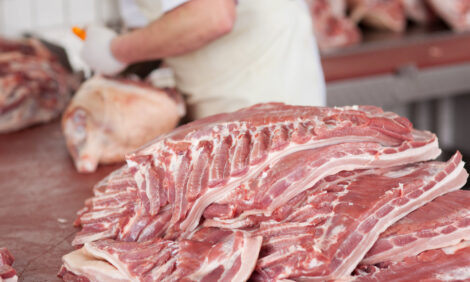



Is Modernising Inspection a Risk?
ANALYSIS - Last week, the USDA decided to extend the consultation time on the new proposals for poultry meat inspection in processing plants, writes editor-in-chief, Chris Harris.The proposals are designed to modernise the USDA's Food Safety and Inspection Service's (FSIS) approach to young chicken and turkey slaughter inspection by focusing FSIS inspection resources on the areas of the poultry production system that pose the greatest risk to food safety.
At present, some FSIS workers in poultry plants perform a variety of activities unrelated to improving food safety, such as identifying relatively superficial defects on birds, such as bruising.
The new proposals are designed to ensure that all FSIS inspection activities will focus on critical food safety tasks to ensure that agency resources are tied directly to protecting public health and reducing foodborne illnesses.
However, the plans been severely criticised by some focus groups, who have accused the government inspection agency of turning poultry meat inspection and food safety over to the industry and some have described the moves as privatisation of poultry meat inspection.
"Apparently saving $90 million over three years is more important to USDA officials than keeping diseased poultry out of the food supply," is the view of the Food Integrity Campaign.
This campaign group has also accused the USDA of bringing in inspection methods that will speed up the lines so that the speed of processing will negate any food safety measures and inspection.
The critics of the new proposals are concerned that inspectors will now not pick up lesions on the carcases and other defects that they fear might be a food safety issue.
Part of the concern is over the effectiveness of the HAACP-Based Inspection Models Project (HIMP) and the fact that it is expected to be extended to other poultry plants.
The concern is that the HIMP scheme has allowed poultry plants to run at high speeds lowering inspection time.
The project was launched in 1999 for 20 poultry plants across the US and according to the USDA Food Safety and Inspection Service has proved to be a success.
However according to USDA Food Safety and Inspection Service Administrator Alfred Almanza: "We have more than a decade of experience slaughter running at 175 bpm, the proposed maximum line speed in the rule. And the data is clear that in these plants, the poultry produced has lower rates of Salmonella, a pathogen that sickens more than 1 million people in the US every year. These plants also maintain superior performance on removing the visual and quality defects that don't make people sick."
Mr Almanza added: "The poultry modernization proposal will help prevent an estimated 5,200 illnesses. How? By focusing our most valuable resource, our front-line inspectors, on what matters.
"Right now, we focus on visual inspections of birds, carcase by carcase, and we look for bumps and blemishes.
"Do these blemishes put Americans' health at risk? No. But the unseen threats, Salmonella and Campylobacter, do.
"Today, we inspect poultry much the same way as we have since the Eisenhower administration, evaluating the quality of each carcase and doing industry's quality assurance work for them."
In the past, the industry view was that by ensuring quality food safety would also be ensured. Now, the industry not just in the US, but around the world has taken on a more risk based view of food safety and central to a risk based system is the use of HACCP.
In Europe, EU Regulation 852/2004 (Article 5) requires food business operators, including meat plant operators to implement and maintain hygiene procedures based on HACCP principles. This legislation replaced the Meat (HACCP) Regulations 2002.
The Hazard Analysis and Critical Control Point (HACCP) system is a preventative approach to food safety based on seven principles:
- identify any hazards that must be prevented eliminated or reduced
- identify the critical control points (CCPs) at the steps at which control is essential
- establish critical limits at CCPs
- establish procedures to monitor the CCPs
- establish corrective actions to be taken if a CCP is not under control
- establish procedures to verify whether the above procedures are working effectively
- establish documents and records to demonstrate the effective application of the above measures
The HACCP approach provides a systematic way of identifying food safety hazards and making sure that they are being controlled day-in, day-out.
As new pathogens are discovered along with new risks to food safety, inspection methods and regimes have to develop and reform.
The US HIMP project has had more than 10 years to bed in and is now part of the general inspection system as is a similar inspection regime in Europe. They are models that are being adopted around the world.
The bottom line to food safety and inspection within the poultry or indeed the red meat plant comes down to economics, because no processor will want to deliver a product that is unsafe.
The cost of a recall, which could be the business itself, is too great.









